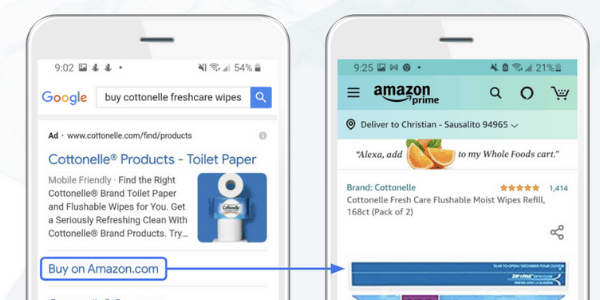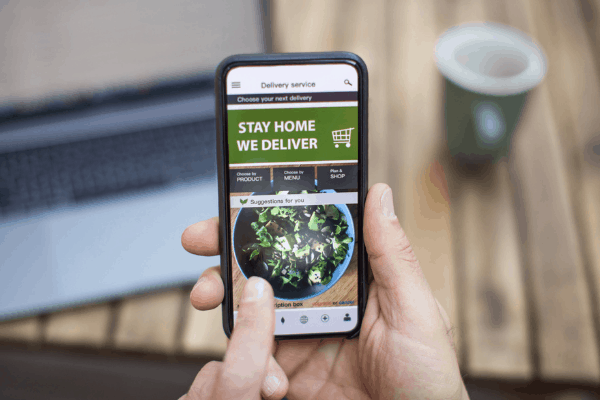
Ecommerce marketing can occasionally feel like a race with no finish line: pumping out content just to collect data and then…pump out more content. However, there’s a lot to be said for slowing down and creating an ecommerce marketing strategy that focuses on clear outcomes, rather than trying to reach all audiences on all platforms all the time.
As customers spend more time engaging with brands online than they have in previous years due to changing shopping habits, ecommerce strategies should focus on providing value to make the most of the new age of online shopping.
Here are a few dos and don’ts for ecommerce marketing as we move into the end of 2021 and beyond:
Do: Master full-funnel social advertising
Of course, most brands know they need a social strategy, but too many brands take a “one message fits all” approach to their social media channels. But social media messaging truly depends on the customer, the platform, and the customer’s stage in the buyer’s journey.
For example, reaching out to customers still in the discovery stage of their journey works well using Facebook’s and Instagram’s targeting features, which allow advertisers to market directly to local customers who have expressed interest in related products. But that’s not to say that advertisers should ignore mid-funnel customers, who have already connected on a retailer’s website, with retargeted ads. And finally, using social media to offer special deals or related products to customers who are about to or have recently made a purchase is an important move for ensuring your social ecommerce strategy reaches customers at all stages of the buyers’ journey.

Skai’s Full-Funnel Retail Digital Marketing report
download your complimentary copy today
Don’t: Over-rely on the same publishers…diversify
Advertising via Google and Facebook are, of course, important ways to connect with customers, especially local customers, as they search for your brand. But Google and Facebook aren’t the only game in town.
As many consumers pivoted to online shopping during the pandemic, a lot of research says that the convenience of mobile and online alternatives to in-store experiences means those shoppers are here to stay. And as the pandemic saw the rise of new platforms like Instacart, a grocery shopping app, and helped Amazon grow even larger, retailers should take a good look at where their customers are, whether its Instacart or third-party platforms like Amazon or Walmart, then set their sights on advertising in spaces where shoppers are actively seeking out their services.
Do: Focus on what’s trending with your customers
Ecommerce marketing strategies often focus on which direction a brand is headed, Noa Wertheimer, Insights Team Lead & Project Manager, Market Intelligence for Skai, recently wrote:
Shifting your perspective is key to identifying cascading trends. Focus on your end consumer rather than a brand, product, or category. What’s trending with your customers in other parts of their lives? The attributes that resonate with them in one category may become so important to them that they look for other ways to access those attributes in their daily lives.
During the pandemic, its likely that customers’ needs shifted, and now, as we reach a potentially brand new post-pandemic reality, it’s important to show audiences that your brand is listening, rather than offering the same old party line.
Don’t: Ignore the basics
As most brands prepare their post-pandemic ecommerce marketing strategies, all-too-often, the basics get overlooked. Keeping websites up-to-date with current information, a robust FAQ section, and plenty of content written with real customers in mind is one of the most foundational thing a brand can do to make sure its reputation (and SEO rankings) stay in tact.
Furthermore, as misinformation becomes a scourge online, it never hurts for brands to do periodic “reputation checks,” monitoring social mentions, online reviews, search results, and other sources in order to both combat misinformation and keep tabs on brand reputation.
Do: Look for the right data
In the data age, it can become so tempting to define our ecommerce marketing strategies as “data-driven” that we end up collecting data for collection’s sake. Discovering the data that answers actual questions–for example, “What features and benefits should we prioritize for optimal product positioning?–is one of the most important ways to make sure ecommerce marketing drives results, rather than simply collecting data.
Skai sidesteps the trap of too much data but not enough insights by basing our recommendations on more than 13,000 well-connected data sources and including the “why” in our predictions, making them explainable, understandable, and available to all decision-makers.
For more information on how Skai can help your business predict the future and avoid the “don’ts” of ecommerce marketing, read more here.






